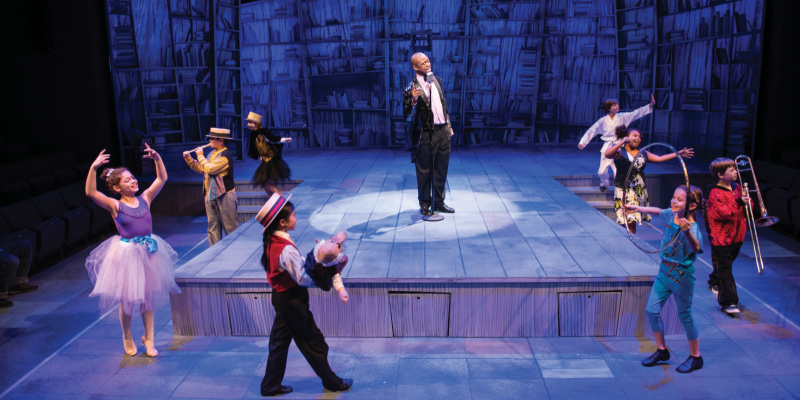A commitment to justice, equity diversity and inclusion are sometimes considered icing on the cake, says Arlen Moss, but that’s not really the right approach.
This kind of work is like baking a cake. To be truly successful, it has to be the main ingredient, Moss says. In other words, companies and organizations need to examine all of their operations and decision-making processes — from recruitment and hiring to the physical space it occupies to the programming and products being offered — with a justice, equity, diversity and inclusion (JEDI) mindset.
And this is exactly what the Children’s Theater of Madison began a few years ago when it established an Equity, Diversity and Inclusion (EDI) Committee, Moss says, who joined the theater’s EDI committee two years ago and is now vice president of the board. (When talking about this work, he uses the acronym JEDI to include justice.)
The committee, which is made up of staff, community members, parents and members of the board, are working to examine and revise any racist systems or processes that could undermine CTM’s JEDI goals.
Erica Berman, the director of education and community engagement for CTM and co-chair of the committee, breaks down their JEDI mindset like this: “Access is about whether you can get into a space. Inclusivity is, ‘Do I belong in a space?’ Diversity is who is in the space. And justice is who has ownership and can make decisions about the space.”
“That’s the work we’re embarking on at CTM,” Berman says. “The hard work and necessary work that will ultimately change the way we serve the youth for the better.” In the past few years, Moss and Patricia Finn — who is also a board and committee member — say the committee has helped make a number of changes that further diversified the organization. Some of that work is more obvious, like the types of plays that are performed.
But a lot of the changemaking work is less visible. For example, Finn says, the group redrafted the committee nomination form and process to help ensure the board was recruiting people who are already doing JEDI work in the community.
“A lot of boards have been sort of good ol’ boys, or if you donate enough money, you get a board seat,” Finn says. “That whole culture has to be torn down. You perpetuate that white wealthy board if you keep filling your board with donors.”
They also reviewed CTM’s general job descriptions and edited them down to a list of the minimum requirements needed, as opposed to a lengthy “wish list” of requirements that ultimately hinder equity, diversity and inclusion goals, she says.
Sobia Kirmani-Moe, a parent of three CTM children and EDI committee chair, says she’s been amazed at the conversations they’re having and what they’ve been able to accomplish so far.
Just last year, in fact, after the committee offered feedback on the productions CTM was planning to put on, a couple of the plays were replaced with content more in line with CTM’s values, including a performance that discussed Juneteenth.
For Kirmani-Moe, who is Pakistani and Muslim, this work is also personal.
“It’s been really important to me that what I see at CTM is inclusive of all races,” she says. “No one has ever looked at my son and ever made him feel like he was an outsider. He’s got a very Muslim name, and never at any point — whether it be in the CTM academy or on stage — did he ever feel like there was any bias against him.”
For Finn and Moss, the work of the committee, and social justice in general, isn’t just “the right thing to do.” It’s imperative.
“In nature, only a diverse ecosystem can survive. If you don’t create diversity in the environment, it will die; it weakens it,” Finn says. “We’ve created an unsustainable system. It’s not only a moral obligation, it will make our community and our children stronger by recognizing the power of diversity.”




